This post may contain affiliate links. For more information, please see our affiliate policy.
Swirls of dark and light dough make this classic, caraway-flecked Marble Rye Bread look like you bought it at a bakery.
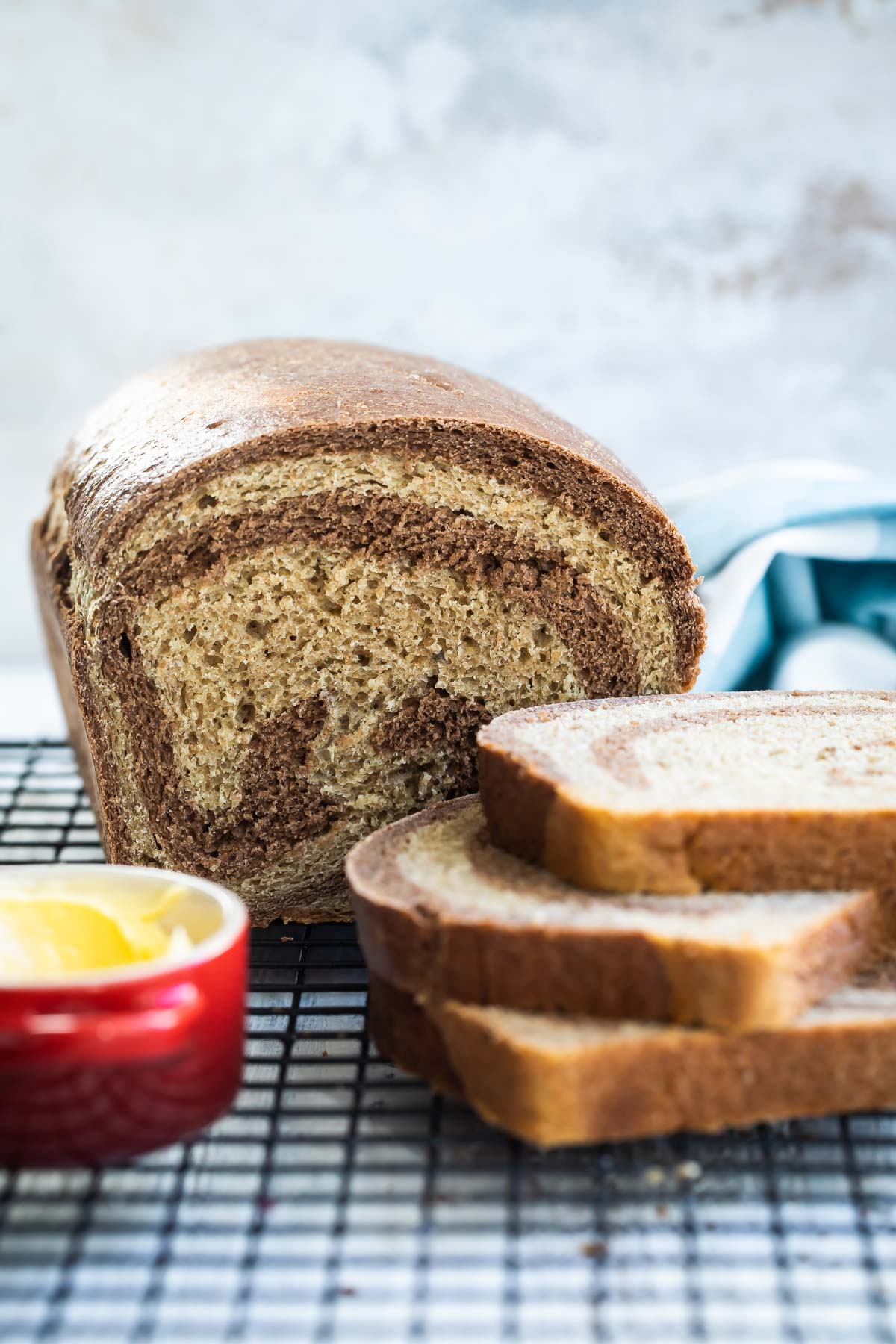
Found on the side of many Wisconsin fish fries, Marble Rye is delicious and interesting without being fussy.
Even if you’re new to baking, there’s no need to be intimidated by this swirled loaf. The secret to the dark color and marbled appearance is cocoa powder; just enough to tint the dough without impacting the flavor.
Table of Contents
Recipe ingredients
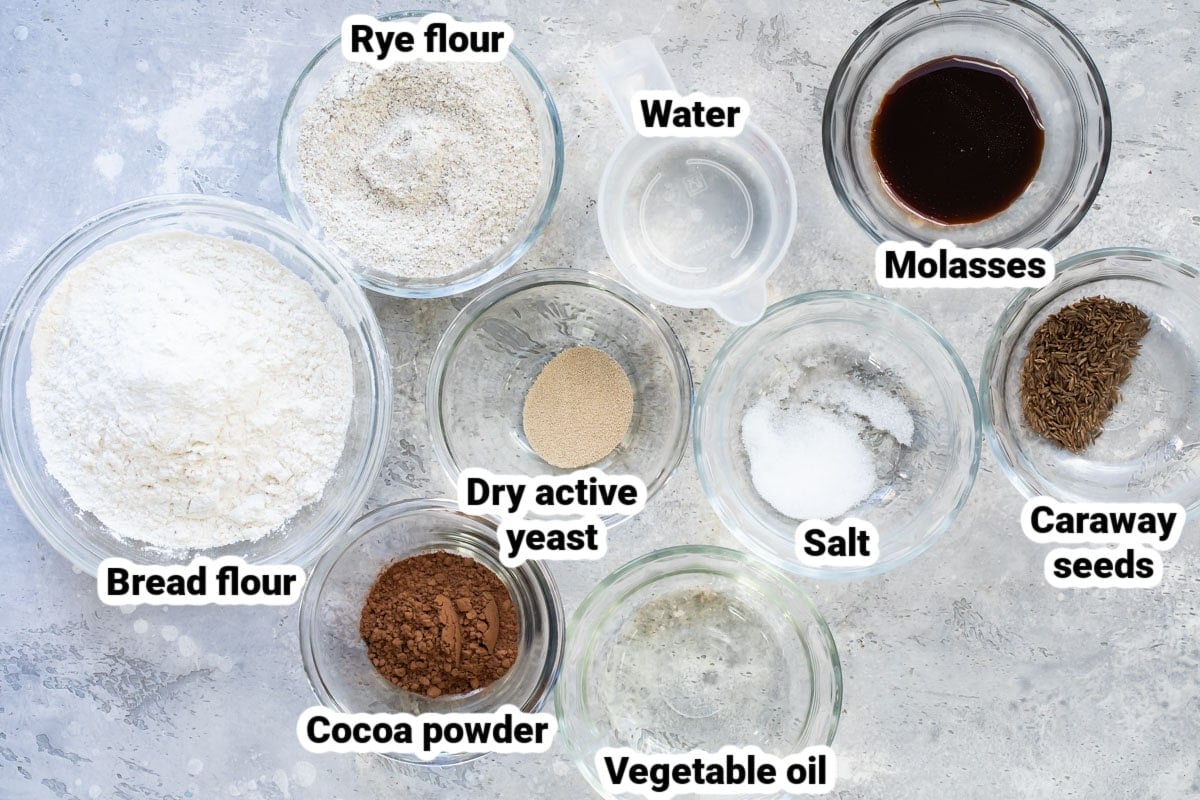
At a Glance: Here is a quick snapshot of what ingredients are in this recipe.
Please see the recipe card below for specific quantities.
Ingredient notes
- Active dry yeast: Red Star, Fleischmann’s, and most other yeast brands sell packets that contain ¼ ounce or 2 ¼ teaspoons of yeast per packet. Below, learn how to test yeast to ensure if it’s active.
- Bread flour: Bread flour is higher in protein (usually 11 to 14%) than all-purpose flour, and the extra protein helps gluten develop. Look for unbleached white bread flour.
- Rye flour: Rye flour is usually sold in smaller packages at the store because it tends to have a shorter shelf life than all-purpose flour.
- Caraway seeds: Caraway seeds are pungent little seeds that are essential in most classic rye bread recipes. Feel free to add more if you prefer very seedy bread.
- Kosher salt: Opt for this since it’s flakier and fluffier than table salt.
- Cocoa powder: Dutch-process or natural cocoa both work fine.
Step-by-step instructions
(The instructions have you make two separate doughs, one right after the other. Get the light rye dough started first, then make the dark rye dough using the same instructions.)
- Activate the yeast by pouring warm water (no hotter than 110 degrees) over the yeast in a small bowl. Let it rest for 5 minutes. Using a stand mixer and the paddle attachment, combine the yeast, water, bread flour, rye flour, salt, caraway seeds, vegetable oil, and molasses on low speed for 2 minutes. Then take the paddle attachment off and replace it with the dough hook, and knead on medium-low speed for 10 more minutes. The dough should be tacky but smooth.
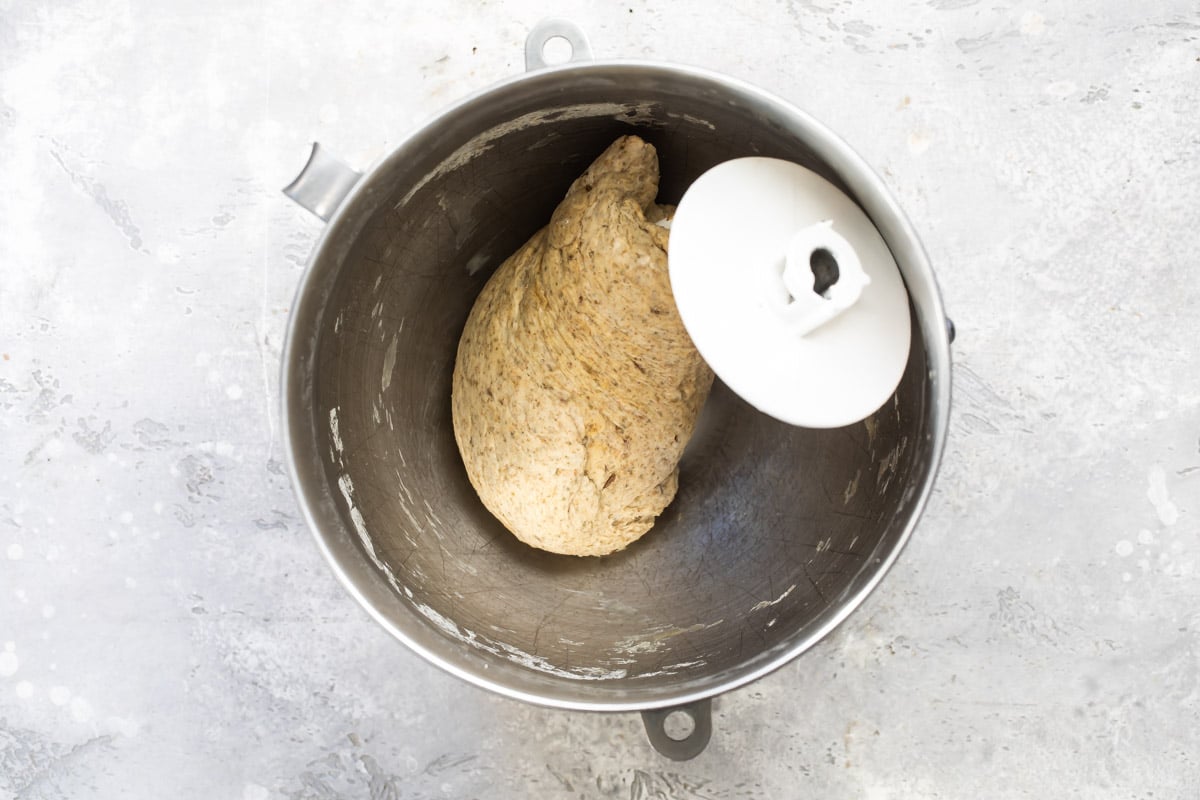
- Form the dough by placing it on a clean work surface and pressing it into a thick, 8-inch circle. Then stretch and fold the sides of the dough up and over itself into the center of the dough, crimping the folded seams together in the middle. The goal is to form a round dough ball that is smooth on the bottom.
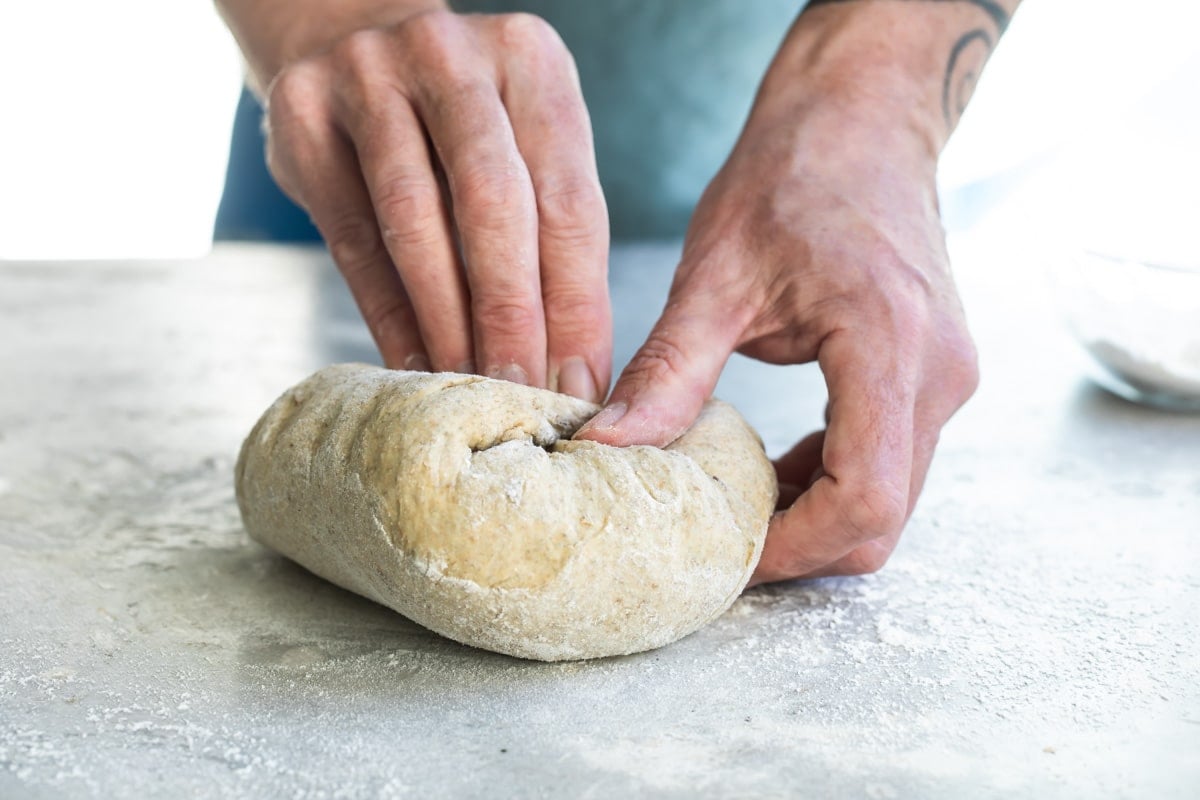
- Place the ball of dough seam side down in a lightly-oiled bowl that’s twice the size of the dough. Cover the top of the bowl with plastic wrap and place in a warm area for 1 ½ hours, until the dough is twice the size.
- As the light rye is proofing, repeat the same steps to make the dark rye dough (don’t forget to add the cocoa powder to the mixer with the flour). The consistency of this dough may feel a little drier; if so, add 1 tablespoon of warm water at a time to the mixer until the dough feels very close to the first.
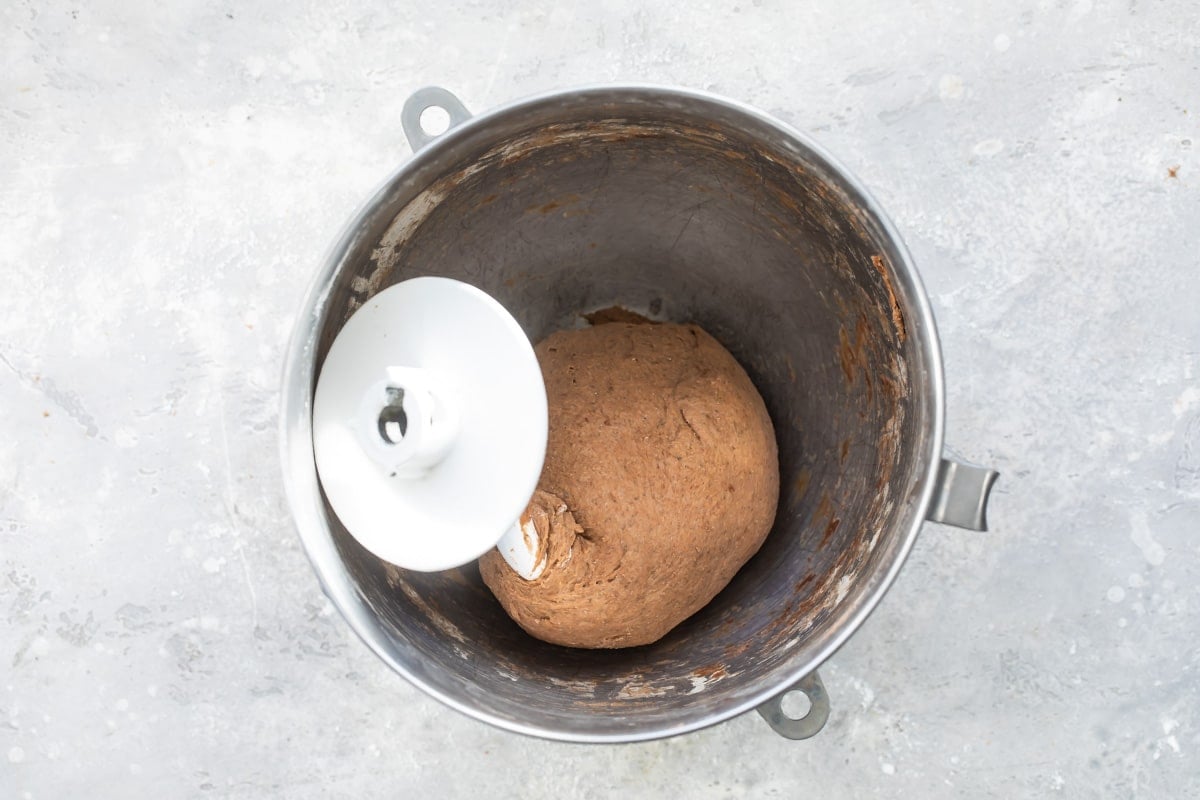
- Remove the dark rye from the mixer and stretch and fold the dough into a ball and place in a second lightly-oiled bowl, seam side down.
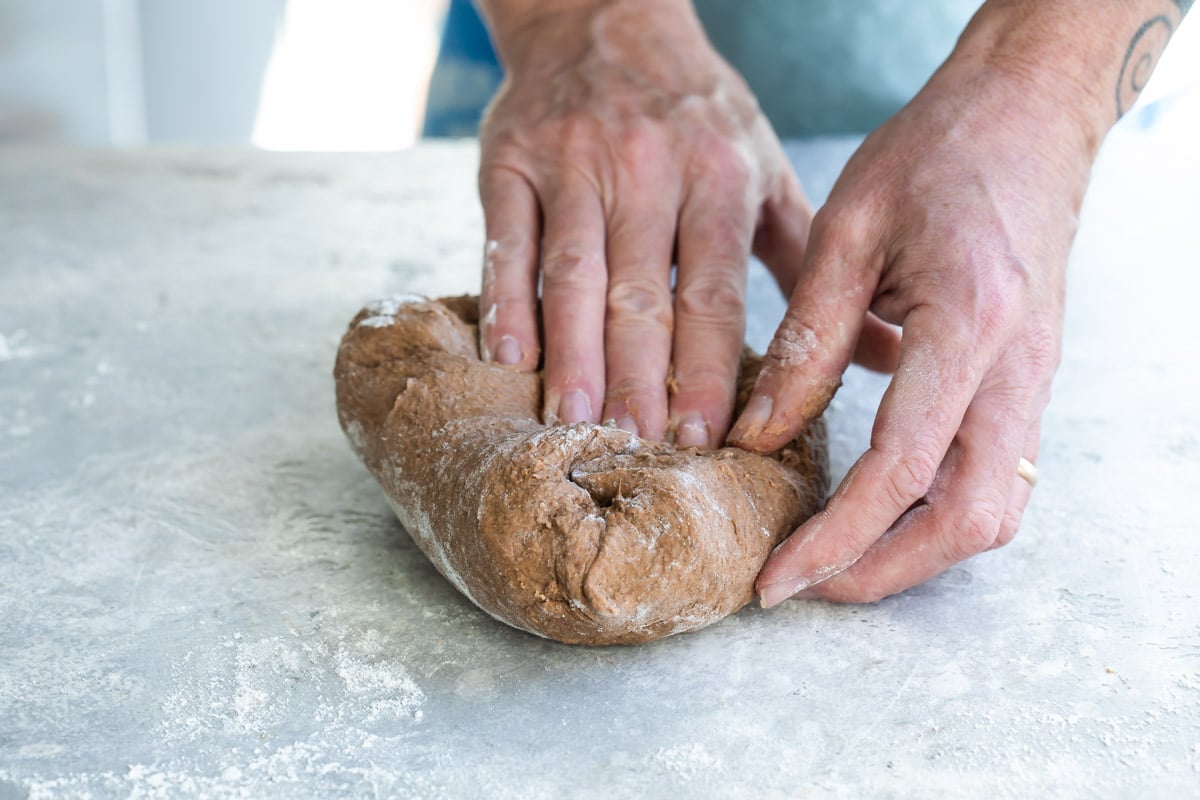
- Cover with plastic wrap and let rise in a warm area with the other dough until both have doubled in size.
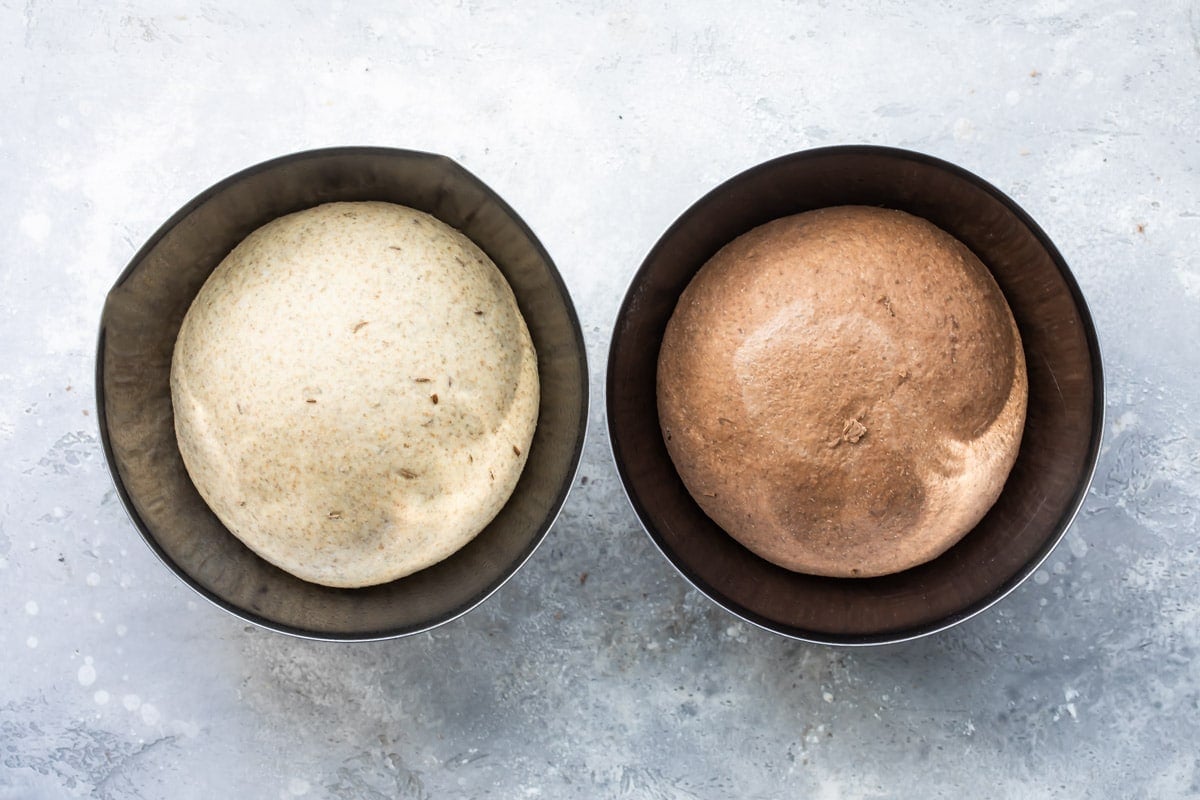
- Once both light and dark doughs have doubled in size, pull them out of the bowls and divide each into 2 equal pieces, for 4 pieces total.
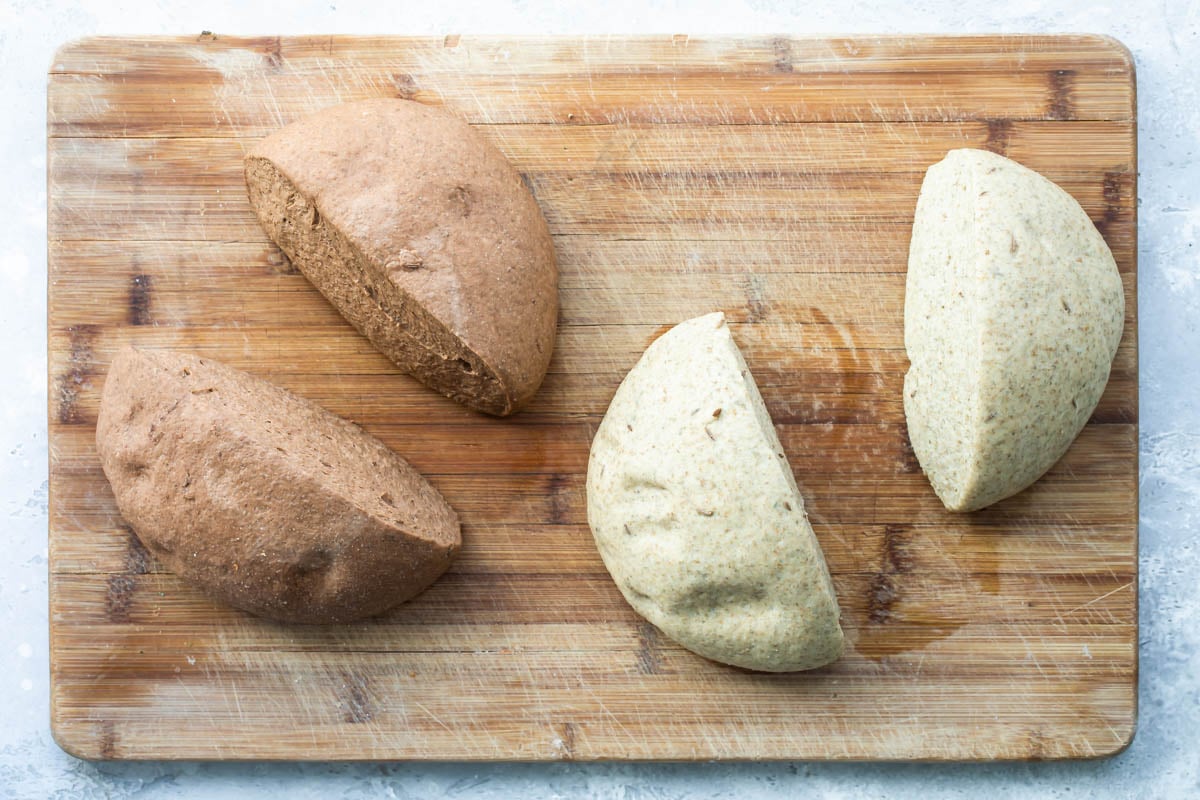
- Lightly oil a work surface and shape each piece into a 6-inch square that’s about 1/4-inch thick. Stack the square on top of one another, alternating light and dark. Press the stack so that all the squares stick to each other.
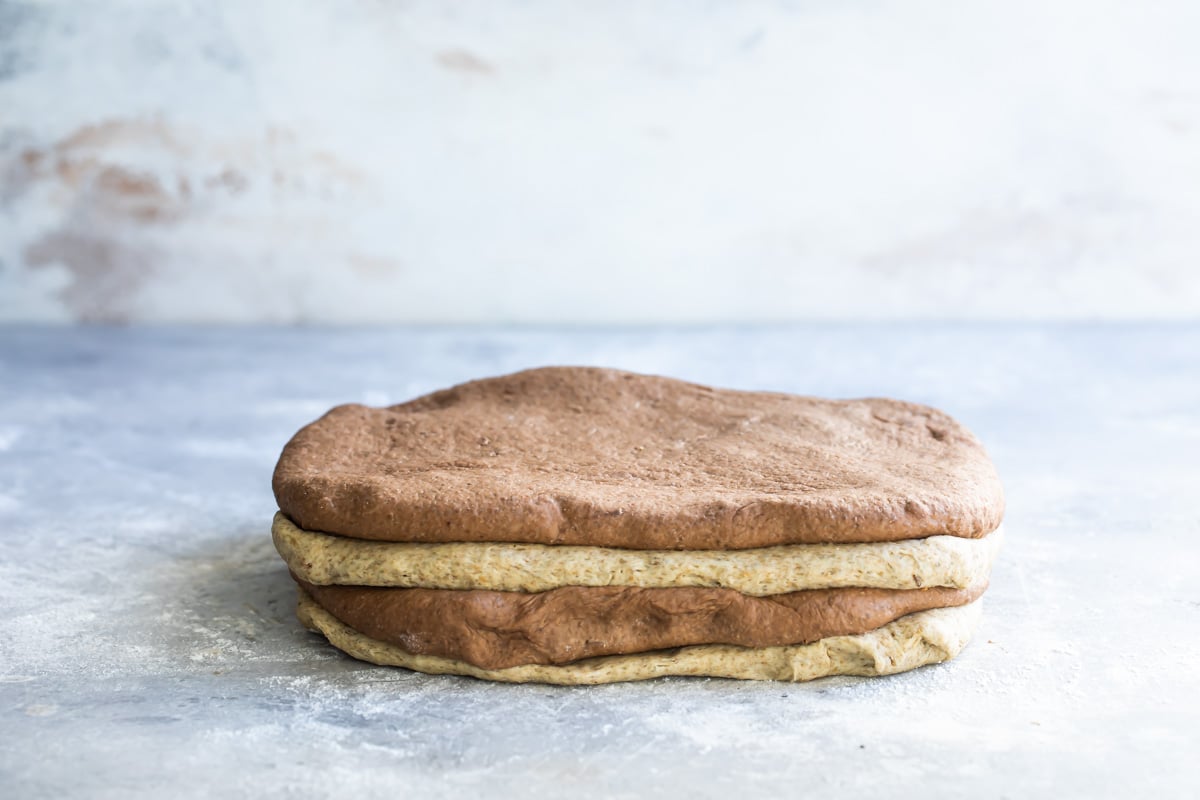
- Then tightly roll the stack up into a loaf shape. Pinch the seam closed to seal the dough together. With the seam side down, gently roll and stretch the dough until it’s the same length as the loaf pan.
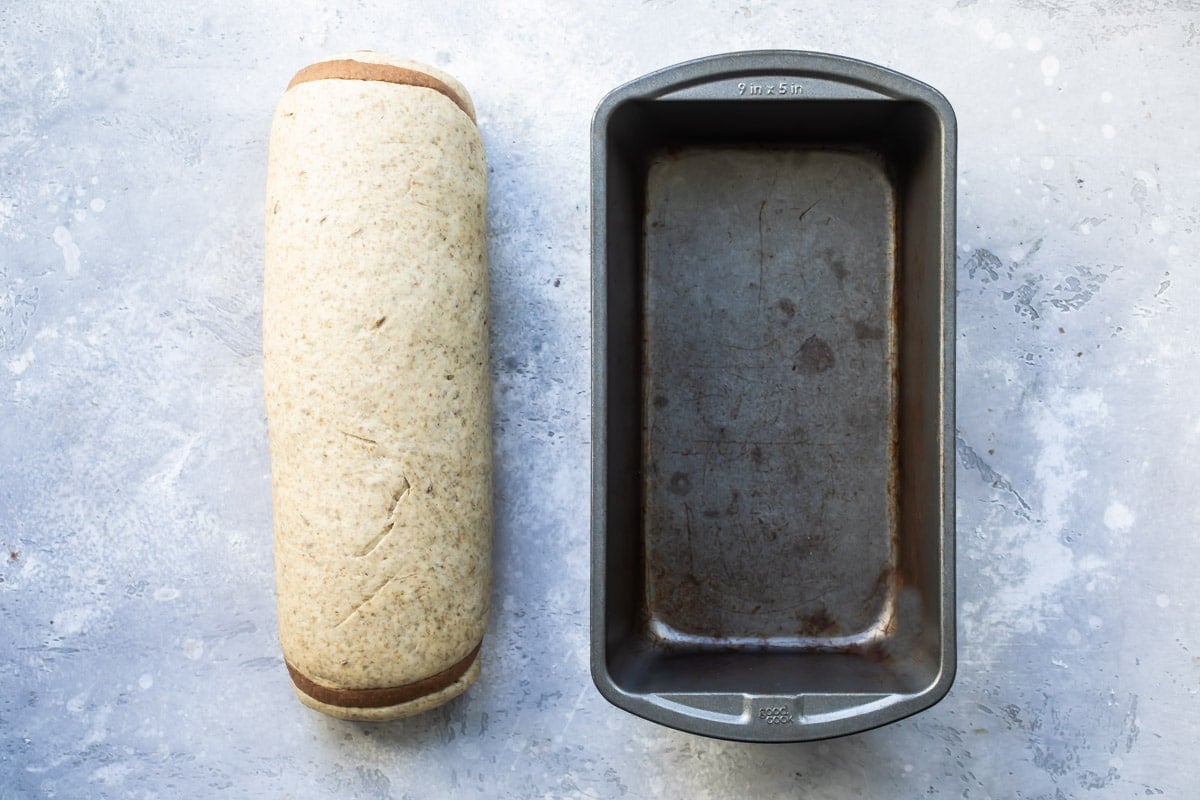
- Place the dough seam side down in the pan and spray the top of the dough with cooking spray. Cover the pan with plastic wrap and place in a warm area to rise a second time until doubled in size. When ready to bake, move the oven rack to the middle position and preheat the oven to 350 degrees.
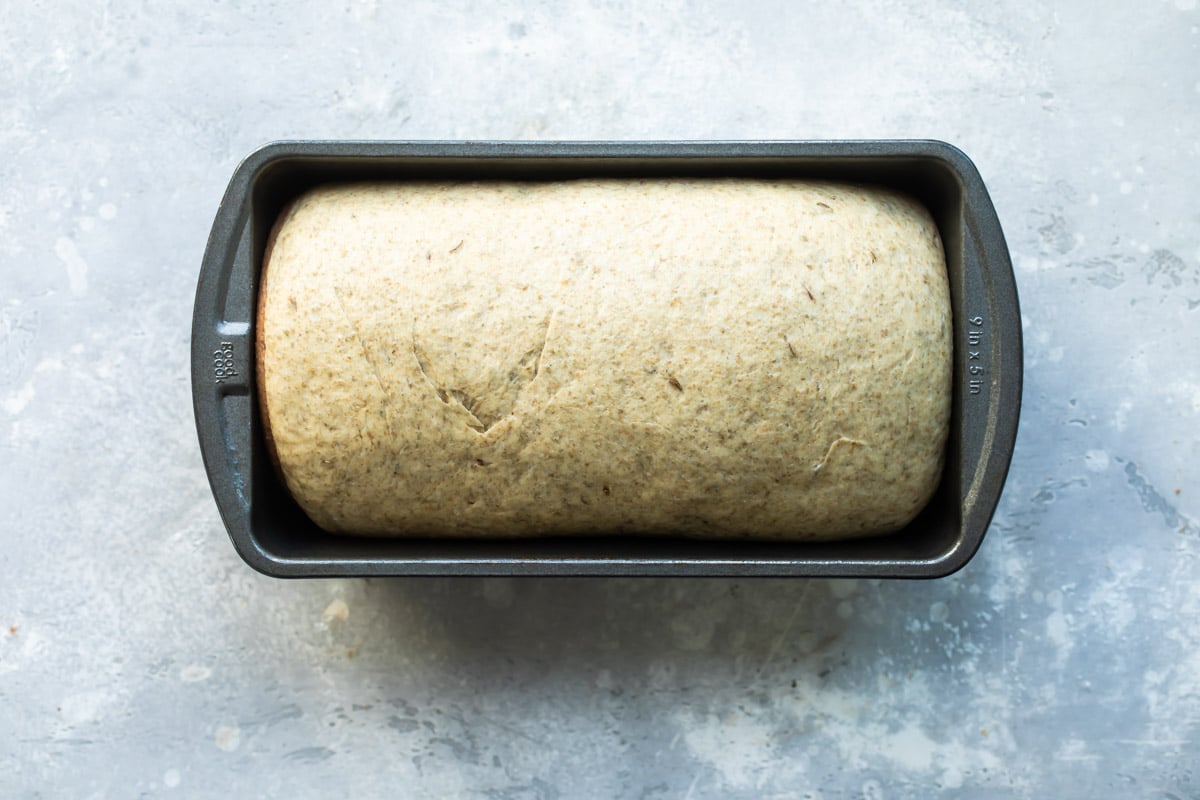
- Whisk together the egg with 1 tablespoon of water in a small bowl. Brush the egg wash over the proofed loaf before baking.
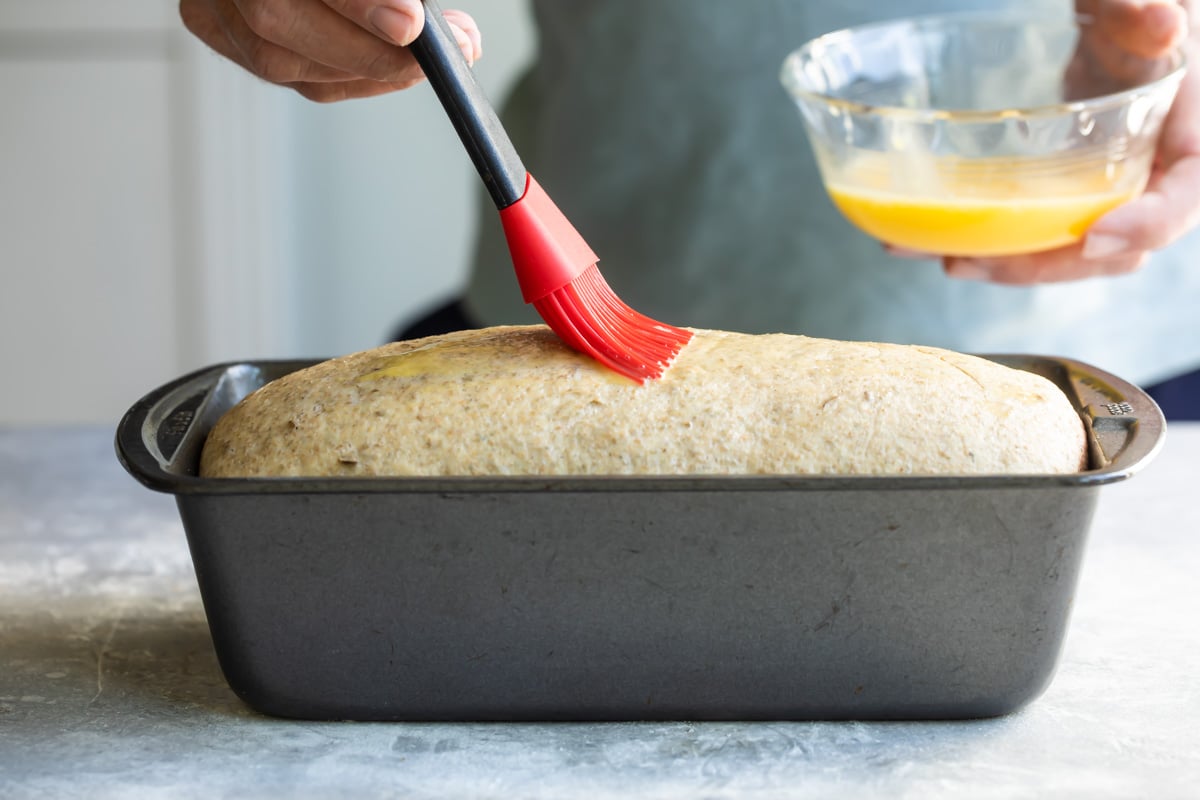
- Bake the bread for 20 minutes, then rotate the loaf and bake for another 20 minutes until golden brown. Remove from the oven and place the pan on a wire rack to cool. Once the pan is cool enough to touch, take it out of the pan and let cool 1 to 2 hours before slicing.
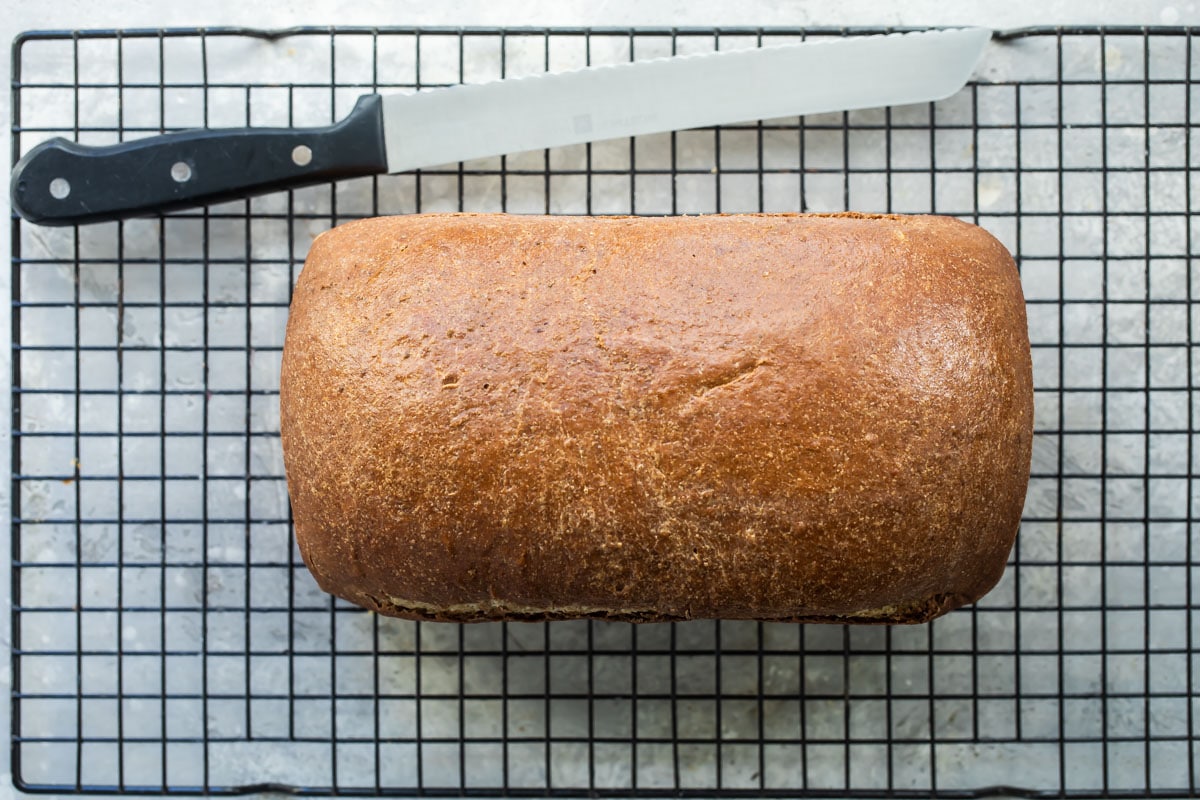
Recipe tips and variations
- Kneading: The consistency of the light and dark doughs need to be the same so they can stick together when rolled and baked.
- Yield: One batch of the recipe makes 1 loaf of bread.
- Storage: Store the bread at room temperature loosely covered with a plastic bag, or pre-slice the entire loaf, place it in a zip-top bag, and store it in the refrigerator.
- Freezing: Freeze bread while still fresh. Allow to cool completely, then seal the loaf up in a zip-top plastic bag. To thaw, let the bread come to room temperature, about 3 hours. To serve warm, wrap the loaf in parchment paper and foil and heat in a 400-degree oven for 3 to 4 minutes.
- Testing yeast for freshness: Dissolve ½ teaspoon sugar in ½ cup warm water. Add one packet (or 2 teaspoons) yeast, stir, and wait 10 minutes. If the yeast mixture is bubbly and domed, your yeast is active and ready to go. (You can use the same yeast you tested–just reduce the liquid in your recipe by ½ cup.)
- How to proof dough: Yeast bread needs a warm, draft-free space to rise, a process called proofing. Here’s how I make a perfect warm area: Turn the oven on to the lowest temperature it will go, usually 200 degrees. Once it reaches 110 degrees, turn the oven off. Place the dough in the oven and close the door. Opening the oven door will lower the heat a bit, and that’s okay (you’re aiming for 75 to 85 degrees). Repeat as needed for second proofing.
- Check for doneness: The internal temperature of the loaf should be between 195 to 200 degrees.
- Cool before slicing: Allow the bread to cool 1 to 2 hours before slicing.
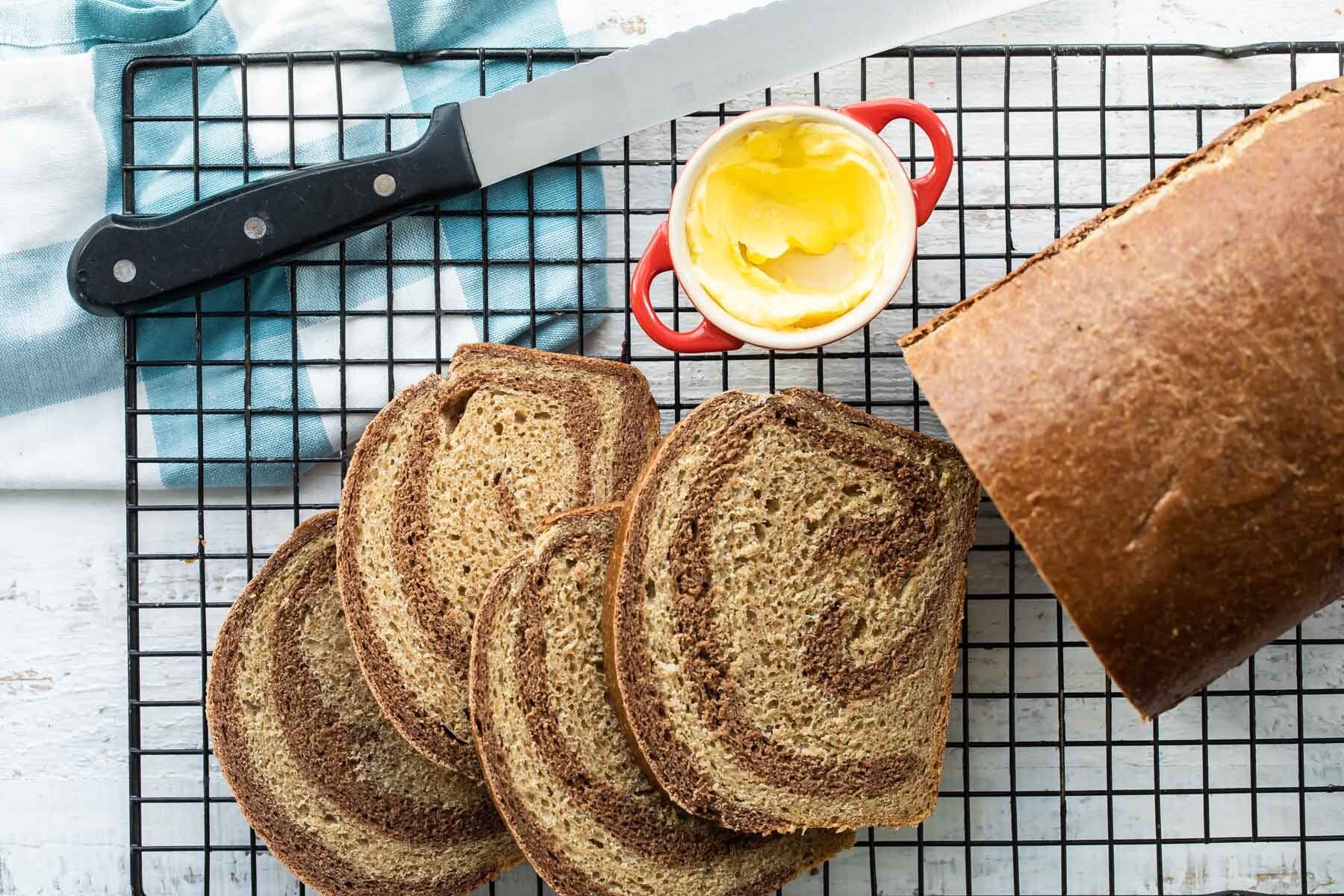
Bake more bread
Bread Recipes
Beer Bread Recipe
Bread Recipes
Challah
Bread Recipes
No-Knead Bread
Bread Recipes
Irish Soda Bread Recipe
Join Us
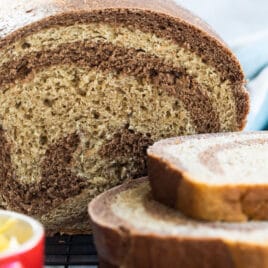
Marble Rye Bread
Ingredients
For the light dough:
- 1 teaspoon active dry yeast
- 3/4 cup plus 2 tablespoons water warm (100-110 degrees Fahrenheit)
- 1 3/4 cups (8 ounces) bread flour
- 4 ounces medium rye flour
- 1 1/4 teaspoons kosher salt
- 1 teaspoon caraway seeds
- 1 1/2 tablespoons vegetable oil
- 1 tablespoon molasses
For the dark dough:
- 1 teaspoon active dry yeast
- 3/4 cup plus 2 tablespoons water warm (100-110 degrees Fahrenheit)
- 1 ¾ cups (8 ounces) bread flour
- 4 ounces medium rye flour
- 1 1/4 teaspoons kosher salt
- 1 teaspoon caraway seeds
- 3 tablespoons cocoa powder
- 1 1/2 tablespoon vegetable oil
- 1 tablespoon molasses
For baking:
- vegetable oil for oiling bowls
- Nonstick cooking spray for shaping
- 1 large egg for egg wash
Instructions
To make the light dough:
- Activate the yeast: In a small bowl, pour in the yeast. Gently pour the warm water over the yeast and allow it bloom for 5 minutes.
- Make the dough: In a standing mixer fit with the paddle attachment on low speed, mix together the bread flour, rye flour, salt, yeast, water, caraway seeds, vegetable oil, and molasses until combined, about 2 minutes. Switch from the paddle attachment to the dough hook, and knead on medium-low speed until the dough is smooth and tacky, about 10 minutes.
- Form the dough: Place dough on a clean surface and press into an 8-inch circle. Using your hands, stretch and fold the dough up and over itself from all sides into the center, crimping it where the folded ends meet, to form it into a tight round ball that is smooth on the bottom.
- First rise: Lightly oil a bowl that is twice the size of the dough, and set the dough into the bowl, seam side down. Tightly cover with plastic wrap. Set aside in a warm area until doubled in size, about 1 ½ hours.
To make the dark dough:
- Immediately after making the light dough, repeat the process to make the dark dough. Add more water a tablespoon at a time if needed to make the dough feel the same consistency as the first one. Stretch and fold the dough into a ball and let it rise in another lightly oiled bowl.
To shape the loaf:
- Divide the doughs: When both doughs have doubled in size, divide each dough in 2 equal pieces. (You will have 4 pieces total)
- Shape dough into squares: Lightly oil a flat work surface. Using your hand or rolling pin, gently shape each piece into a 6-inch square about ¼ inch thick. Stack the dough squares alternating light and dark dough. Firmly press down so all four pieces stick to each other.
- Roll the stack: Starting with the side closest to you, tightly roll the stack up into the loaf, pinching the seam closed with your fingertips to seal. Set the loaf seam side down and gently roll and stretch dough until it is the same length as a 9-inch by 5-inch loaf pan.
- Second rise: Place loaf seam side down in the loaf pan, coat the top with cooking spray. Cover pan tightly with plastic wrap and set aside in a warm place until doubled in size. (see note)
To bake the loaf:
- Preheat oven: Position a rack in the center of the oven and preheat to 350 degrees.
- Egg wash: In a small bowl whisk together the egg with 1 tablespoon of water. Lightly brush the top of the loaf with the egg wash. Discard any leftover egg wash. Place loaf in the oven and bake for 20 minutes.
- Rotate loaf: Rotate the loaf pan and continue until golden brown, about 20 minutes more. Transfer the loaf in the pan onto a wire rack to cool. Once the pan is cool enough to handle, remove the bread from pan and allow cool completely before slicing.
Notes
- Active dry yeast: Red Star, Fleischmann’s, and most other yeast brands sell packets that contain ¼ ounce or 2 ¼ teaspoons of yeast per packet. Below, learn how to test yeast to ensure if it’s active.
- Bread flour: Bread flour is higher in protein (usually 11 to 14%) than all-purpose flour, and the extra protein helps gluten develop. Look for unbleached white bread flour.
- Rye flour: Rye flour is usually sold in smaller packages at the store because it tends to have a shorter shelf life than all-purpose flour.
- Caraway seeds: Caraway seeds are pungent little seeds that are essential in most classic rye bread recipes. Feel free to add more if you prefer very seedy bread.
- Kosher salt: Opt for this since it’s flakier and fluffier than table salt.
- Cocoa powder: Dutch-process or natural cocoa both work fine.
- Kneading: The consistency of the light and dark doughs need to be the same so they can stick together when rolled and baked.
- Yield: One batch of the recipe makes 1 loaf of bread.
- Storage: Store the bread at room temperature loosely covered with a plastic bag, or pre-slice the entire loaf, place it in a zip-top bag, and store it in the refrigerator.
- Freezing: Freeze bread while still fresh. Allow to cool completely, then seal the loaf up in a zip-top plastic bag. To thaw, let the bread come to room temperature, about 3 hours. To serve warm, wrap the loaf in parchment paper and foil and heat in a 400-degree oven for 3 to 4 minutes.
- Testing yeast for freshness: Dissolve ½ teaspoon sugar in ½ cup warm water. Add one packet (or 2 teaspoons) yeast, stir, and wait 10 minutes. If the yeast mixture is bubbly and domed, your yeast is active and ready to go. (You can use the same yeast you tested–just reduce the liquid in your recipe by ½ cup.)
- How to proof dough: Yeast bread needs a warm, draft-free space to rise, a process called proofing. Here’s how I make a perfect warm area: Turn the oven on to the lowest temperature it will go, usually 200 degrees. Once it reaches 110 degrees, turn the oven off. Place the dough in the oven and close the door. Opening the oven door will lower the heat a bit, and that’s okay (you’re aiming for 75 to 85 degrees). Repeat as needed for second proofing.
- Check for doneness: The internal temperature of the loaf should be between 195 to 200 degrees.
- Cool before slicing: Allow the bread to cool 1 to 2 hours before slicing.
Nutrition
Meggan Hill is a classically-trained chef and professional writer. Her meticulously-tested recipes and detailed tutorials bring confidence and success to home cooks everywhere. Meggan has been featured on NPR, HuffPost, FoxNews, LA Times, and more.
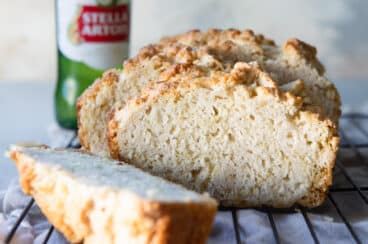
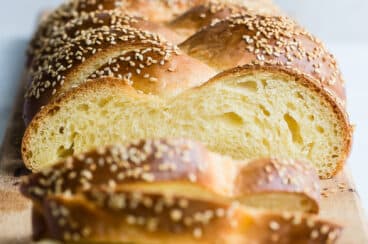
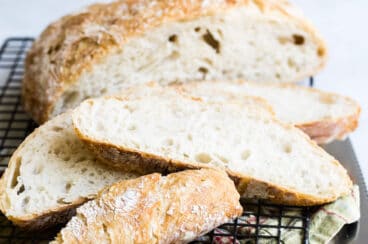

As written, dough came out really dry for me, but upping the water content to 1 full cup did the trick, and it came out beautifully. Perfect spiral inside the bread, and it was rich and flavorful!
Great recipe, thank you! I have make this twice and both times it came out amazing. In our house we all love marble rye bread.
You’re so welcome, Paula! I’m glad it’s a hit! – Meggan
This is a great recipe!Thanks
You’re so welcome, Carol! So glad you loved it! – Meggan
Hi Darling,
You are the best!
Dalva Maraci
from Brazil
You could not have timed this more perfectly. I’ll let you know how it turned out.